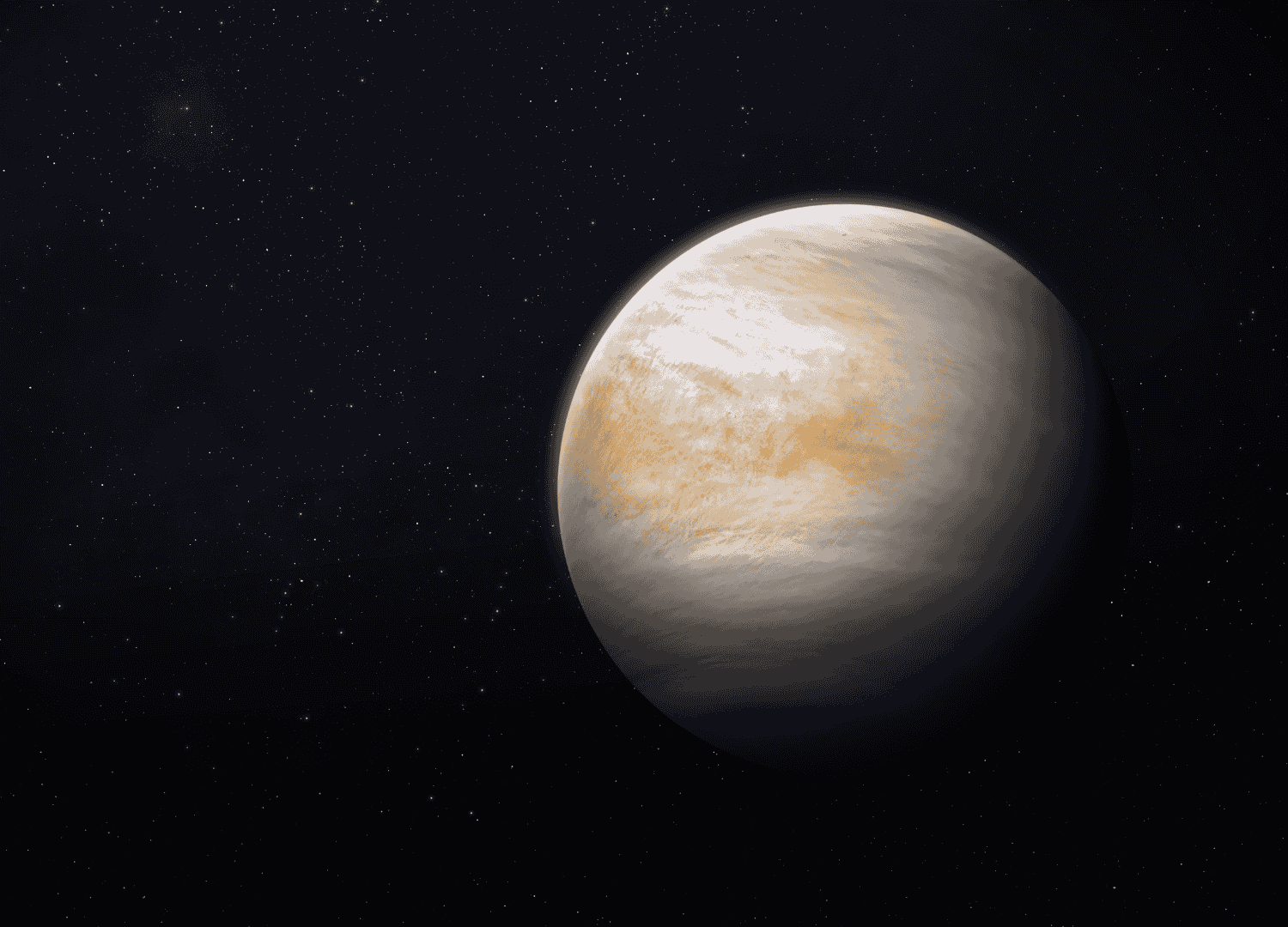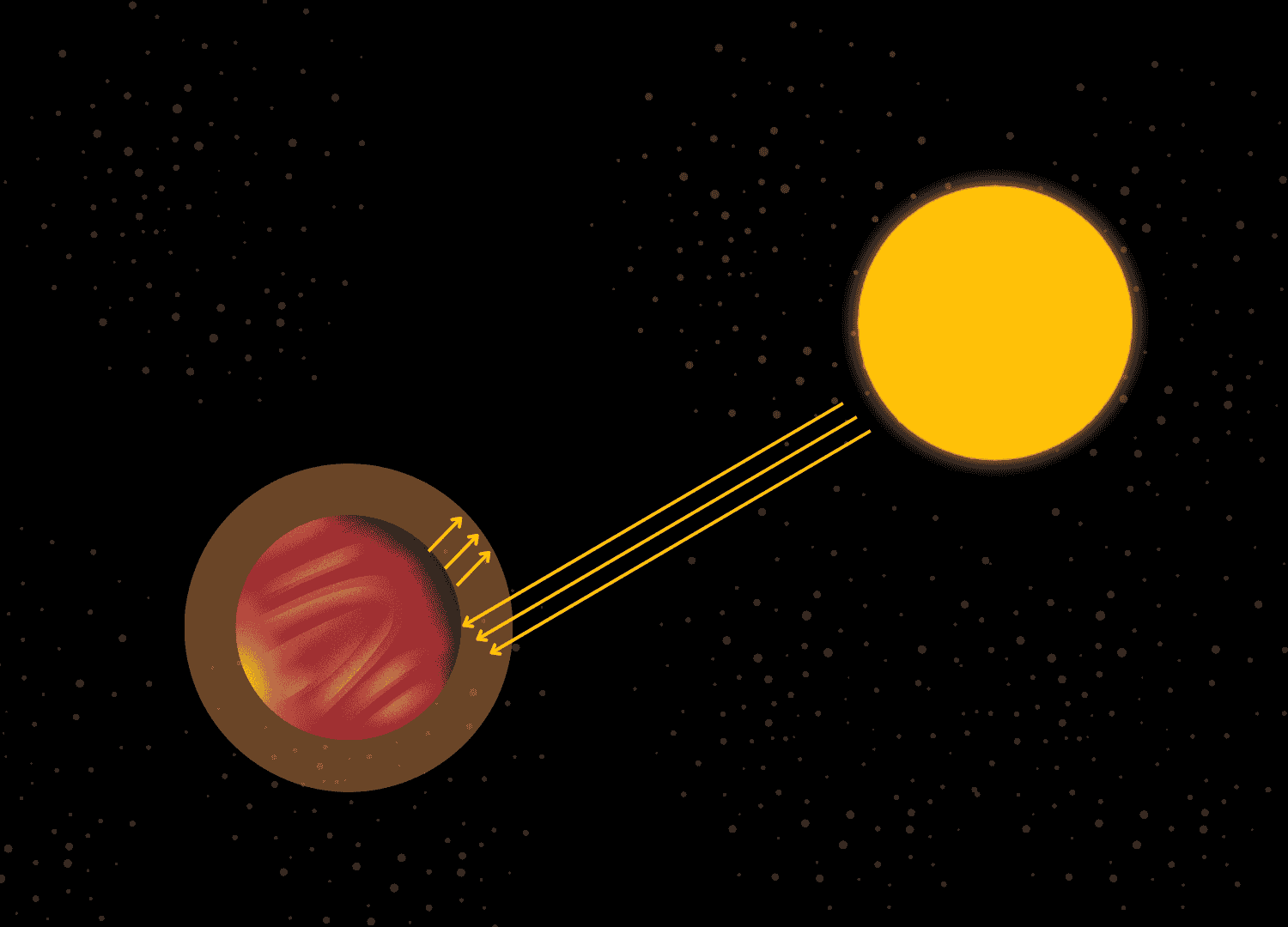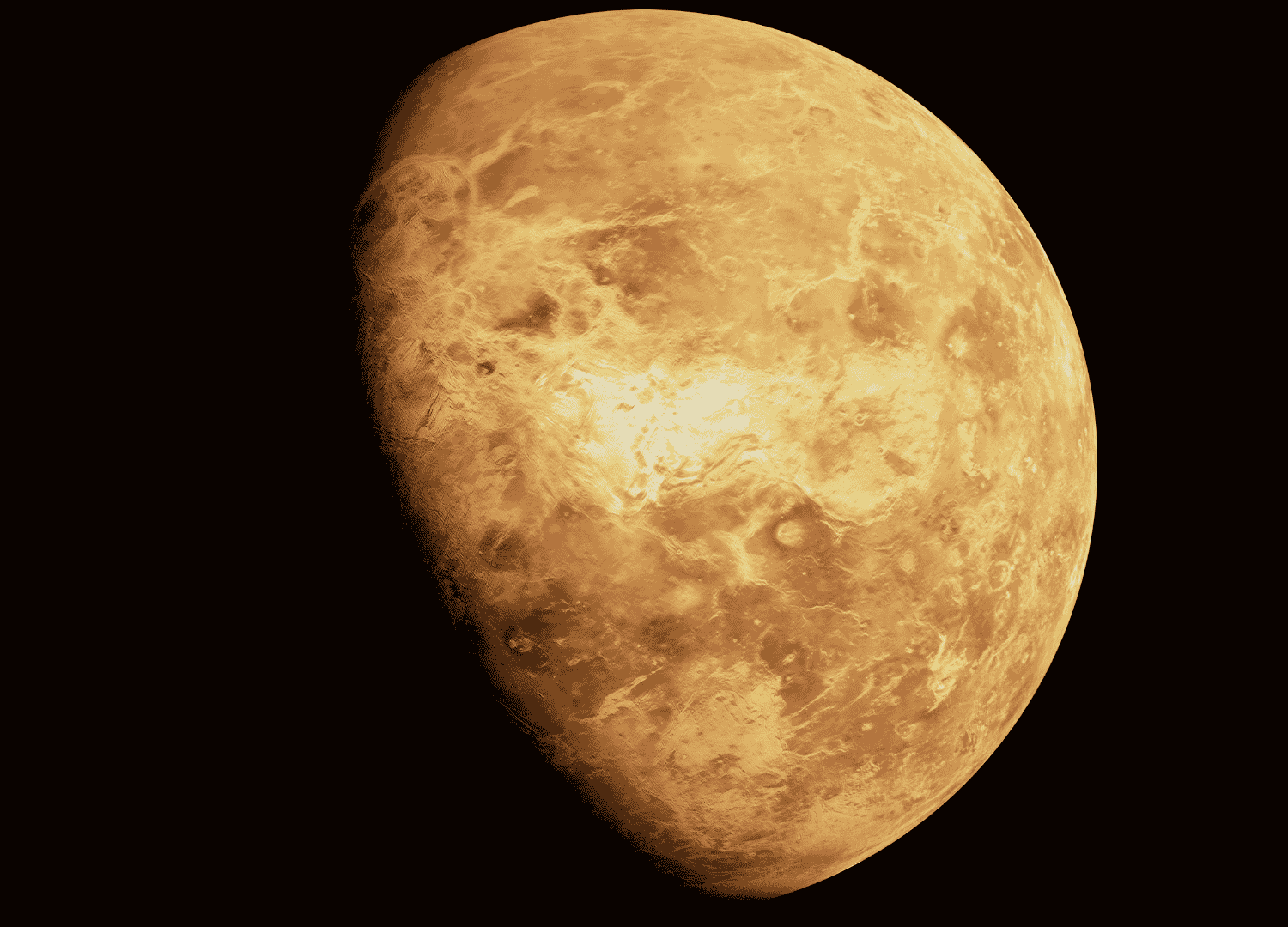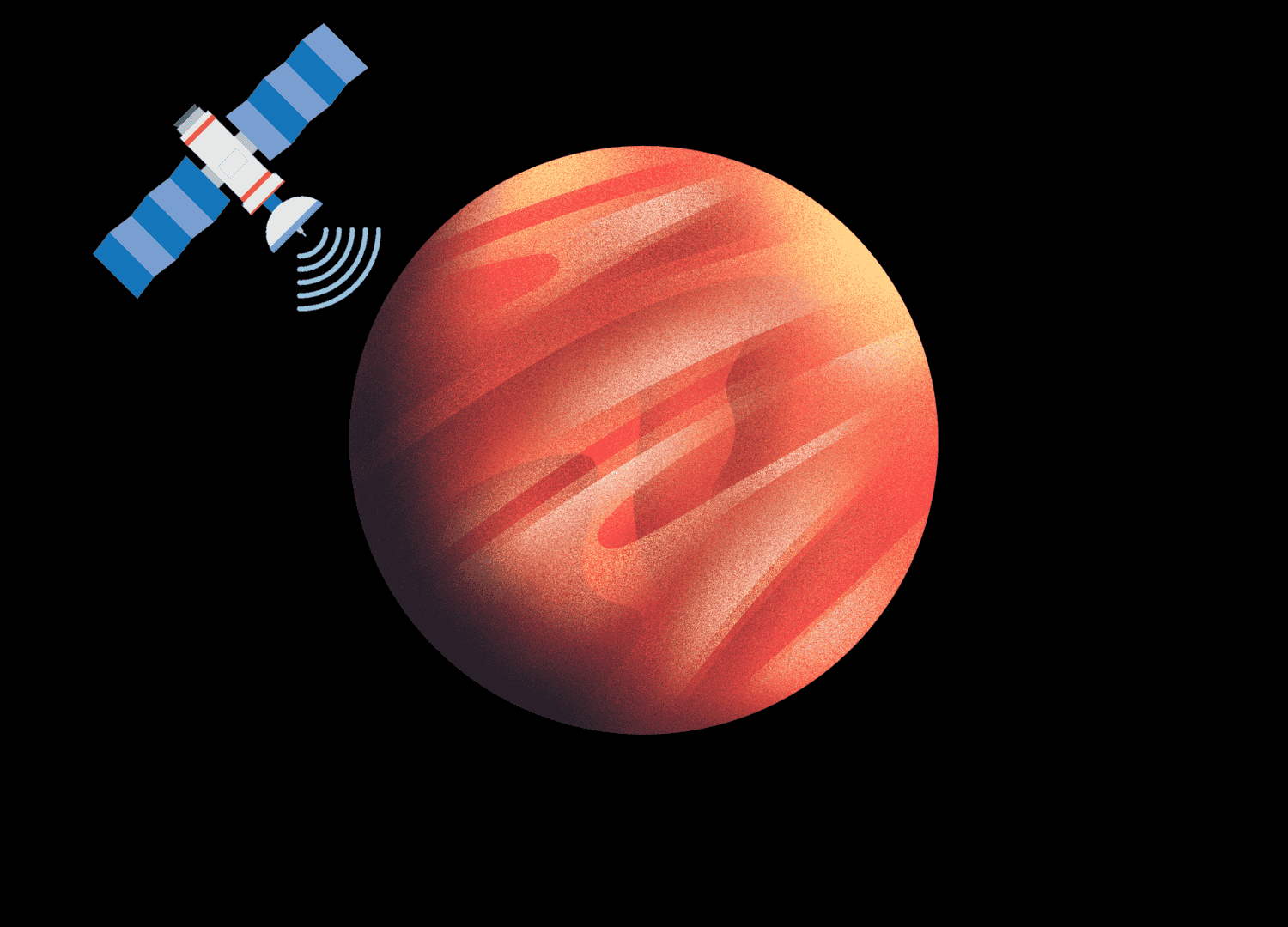

Venus, also known as Earth’s “sister planet” due to its similar size and vicinity, has a notable characteristic in our solar system: it is the hottest planet. Despite being the second planet from the Sun, Venus’s surface temperature is significantly higher than that of Mercury, the planet closest to the Sun. This astonishing statistic raises the question of why Venus is the hottest planet. In this blog, we’ll look at Venus’s unique atmospheric conditions, planetary structure, and scientific facts, all of which contribute to its fiery nature.
The Atmosphere of Venus
The fundamental reason Venus is the hottest planet is its thick, dense atmosphere, which contains 96.5% carbon dioxide (CO2). This atmosphere is extremely efficient at trapping heat via a mechanism known as the greenhouse effect. Although Venus is not as close to the Sun as Mercury, its atmosphere prevents heat from escaping, causing surface temperatures to reach an average of 465°C (869°F), which is hot enough to melt lead.
Mercury, on the other hand, lacks a large atmosphere to retain heat, enabling daylight heat to escape into space and resulting in lower surface temperatures than Venus.
Runaway Greenhouse Effect
Venus’ atmosphere comprises dense clouds of sulfuric acid (H₂SO₄), which reflect sunlight but trap the planet’s infrared radiation (heat). This results in a runaway greenhouse effect, in which trapped heat promotes additional heating of the planet’s surface, producing a vicious cycle.
Venus absorbs less solar energy than Mercury, but due to the severe greenhouse effect, it retains much more heat, driving surface temperatures far above those seen on any other planet in the solar system. Climate scientists have conducted substantial research on this phenomenon to better understand the potential implications of rising CO2 levels on Earth.
Slow Rotation and its Impact on Temperature
Venus has an unusual rotating pattern: it rotates very slowly on its axis, taking 243 Earth days to complete a full rotation. This is longer than its orbital period around the Sun, therefore a day on Venus lasts more than a year. The sluggish rotation leads to its distinct temperature distribution. With such a sluggish spin, there is no substantial day-night temperature difference. Instead, the thick atmosphere efficiently distributes heat around the globe, keeping even the night side extremely hot.
This property of Venus causes it to be uniformly hot across its surface, as opposed to Mercury, where daytime and nighttime temperatures can vary greatly.
Surface Conditions
The surface of Venus is a harsh terrain with immense plains, mountains, and volcanic landforms. The planet’s surface pressure is approximately 92 times that of Earth, therefore being on the surface would feel like being 900 meters underwater. The tremendous pressure aids in the retention of heat, making it difficult for heat to disperse.
Venus’s surface is similarly arid and barren due to a lack of water vapor. Any water that may have existed on Venus evaporated early in its history, potentially contributing to the runaway greenhouse effect. NASA‘s Parker Solar Probe and the European Space Agency‘s Envision mission, both scheduled for the 2030s, aim to offer more information about Venus’ surface and atmospheric composition in order to better understand its history of high heating.
Distance from the Sun
Venus is closer to the Sun than Earth, while Mercury is the closest planet. However, the difference in surface temperatures between Venus and Mercury demonstrates that a planet’s temperature is determined by more than just its proximity to the Sun. Mercury’s average temperature varies from 427°C (800°F) during the day to -173°C (-280°F) at night due to the lack of an atmosphere. In contrast, Venus’ dense atmosphere keeps its surface heated both day and night.
Current and Future Explorations
Recent missions have renewed interest in Venus, as scientists attempt to better comprehend its severe environment and its potential impact on Earth’s climate. NASA’s VERITAS and DAVINCI+ missions are scheduled to launch later this decade to map Venus’ surface and examine its atmospheric composition.
Meanwhile, the European Space Agency’s Envision mission seeks to investigate Venus’ geological activities and whether the planet ever possessed circumstances conducive to liquid water. These missions will provide more information to assist us understand why Venus became a raging inferno and what lessons we can apply to Earth.
Conclusion
To summarize, Venus is the hottest planet in our solar system because of its dense carbon dioxide-rich atmosphere, runaway greenhouse effect, and slow rotation. These distinct properties produce a condition in which heat is trapped and repeatedly recirculated, making Venus hotter than Mercury despite its distance from the sun. As prospective satellite missions increase our study of Venus, we will continue to uncover its secrets and, hopefully, gather critical knowledge for maintaining our own planet’s environment.





8 comments. Leave new
It’s really a nice and helpful piece of info. I’m glad that you shared this
helpful information with us. Please stay us informed
like this. Thank you for sharing.
Thank you for your kind words. I’m glad you found the information helpful. I will continue to share valuable insights. Stay connected!
Hi there, I found your site by means of Google while looking for a related topic, your website got here
up, it appears great. I’ve bookmarked it in my google bookmarks.
Hi there, just was aware of your blog through Google, and found that it is truly informative.
I’m gonna watch out for brussels. I’ll appreciate if you continue this in future.
Numerous other folks shall be benefited from your writing.
Cheers!
Thank you for your thoughtful comment and for bookmarking my site. I’m glad you found the content informative. I appreciate your support and will continue sharing valuable insights. Stay connected!
This is a topic which is close to my heart… Thank you! Exactly where are your
contact details though?
I’m glad this topic resonates with you! Thank you for your appreciation.
What i don’t realize is actually how you’re not really much more well-preferred than you may be now.
You are very intelligent. You realize thus considerably in the case of this matter, made me personally imagine it from a lot of numerous
angles. Its like women and men don’t seem to be involved unless it’s
something to accomplish with Woman gaga! Your individual stuffs excellent.
All the time care for it up!
What a stuff of un-ambiguity and preserveness of valuable experience regarding unexpected
emotions.